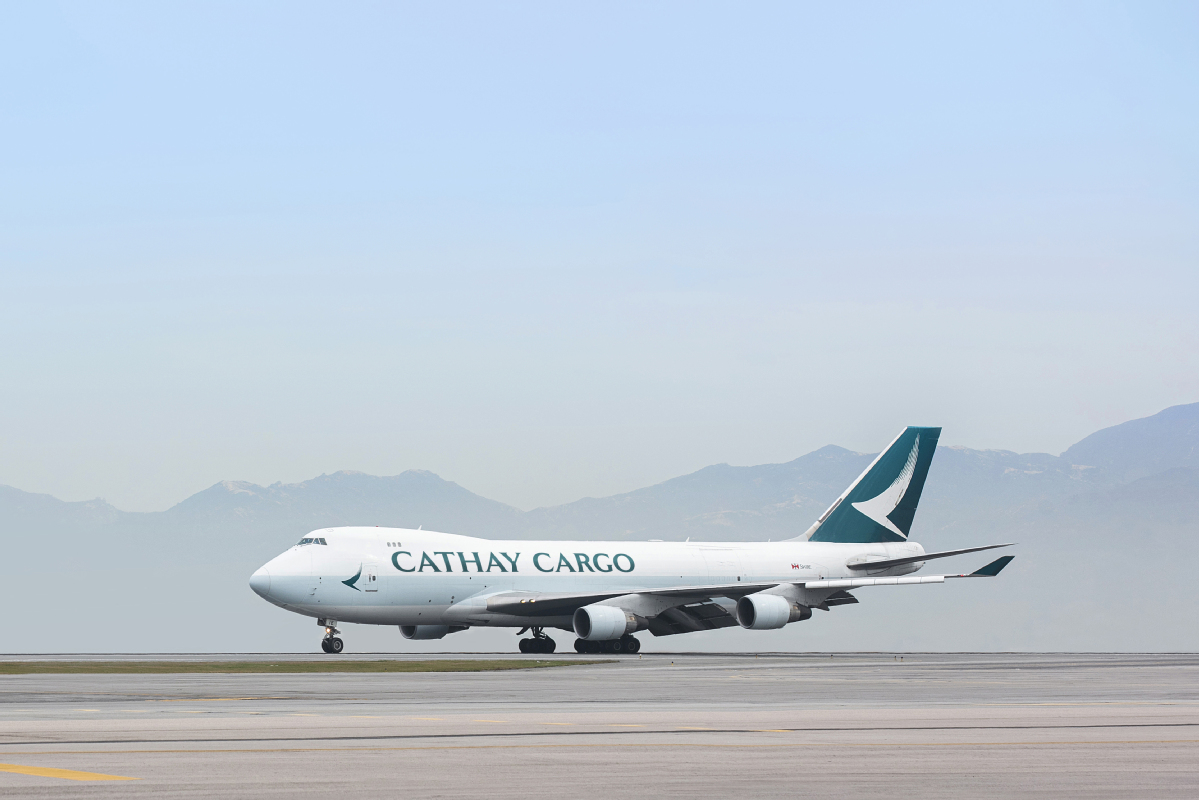
Hong Kong carrier Cathay Pacific Airways said it will continue to increase cargo capacity of flights connecting the Chinese mainland, Hong Kong and overseas destinations, fueled by continuously growing demand for transporting e-commerce products.
The primary driver of its cargo business growth has been transporting e-commerce products from Guangdong province and Shanghai to overseas markets, and about 50 percent of cargo revenue comes from the Guangdong-Hong Kong-Macao Greater Bay Area, the carrier said.
With more overseas customers buying products from Chinese e-commerce platforms, transporting e-commerce products now accounts for 50 to 60 percent of the cargo business from Hong Kong to other destinations, significantly higher than the 20 percent seen not long ago.
“We believe that demand for transporting e-commerce products from China will continue to grow, and it is expected to become a long-term trend. Such demand in other parts of the world is softer,” said Tom Owen, director of cargo at Cathay Pacific Airways.
“Cathay cargo’s future is tightly connected with China, and we are very optimistic about the future growth potential. China’s economy is still growing at a strong rate compared with the rest of the world. As people get more wealthy, they want to get better products, and it will make air cargo more important,” Owen said.
With a freight facility in Dongguan, Guangdong, Cathay cargo has made it less expensive and more efficient for Chinese mainland customers to transport goods overseas, as they can clear Customs in the Chinese mainland without having to complete anything in Hong Kong.
The facility, in its first year of pilot operations, stands as a long-term project and is expected to see continuously growing demand in the months ahead, Owen said.
Currently, Cathay cargo connects 16 Chinese mainland destinations with Hong Kong. Fueled by growing demand in cities such as Beijing, Shanghai, Chongqing and Zhengzhou, Henan province, the carrier has been increasing flight frequencies over the past six months and will continue to do so.
With a fleet of 20 Boeing B747 freighters, coupled with bellyhold cargo capacities from 190 passenger aircraft, the carrier has announced the purchase of six new Airbus A350F freighters, and signed a purchase option for 20 more A350F freighters.
“The new freighters are expected to be put into long-haul routes connecting the Chinese mainland and Hong Kong with the United States, Europe and Australia,” Owen said.
Hong Kong International Airport, the world’s busiest cargo transportation hub, is expanding into a three-runway system, which will increase its passenger and cargo capacity to handle 120 million passengers and 10 million metric tons of cargo annually.
In the first five months, Cathay cargo saw total demand, measured in cargo ton-kilometers, up 10 percent year-on-year. Its cargo transportation capacity has recovered rapidly and resumed to 85 percent of pre-COVID levels, and the capacity of Cathay Group is expected to fully rebound in the first quarter of 2025.
Meanwhile, as Chinese consumers have been pursuing increasingly high-quality lifestyles and premium products, inbound demand for fresh products like flowers and imported fruits has been growing, especially in Guangdong, Cathay Pacific said.
Asia-Pacific airlines saw 14 percent year-on-year demand growth for air cargo in April, the strongest of all regions, according to the latest data from the International Air Transport Association.
Demand within the Asia market grew by 13.2 percent compared to April 2023, and the Asia-Europe route grew by 17.7 percent. The Middle East-Asia route rose by 10.4 percent, the IATA said.
“Air cargo demand started the second quarter with a solid 11.1 percent increase globally. While many uncertainties remain, it appears that the roots of air cargo’s strong performance are deepening,” said Willie Walsh, IATA’s director-general.
zhuwenqian@chinadaily.com.cn